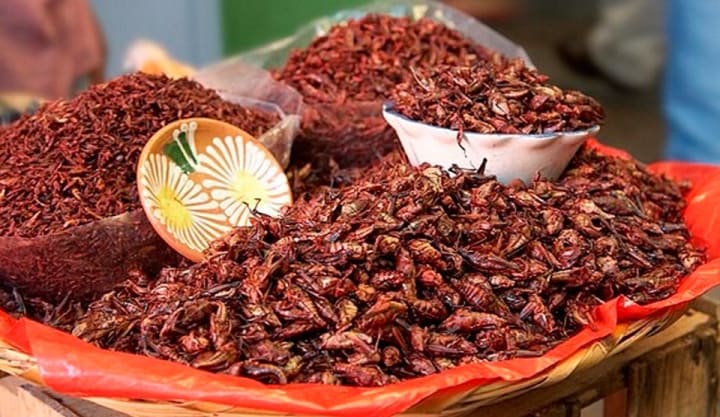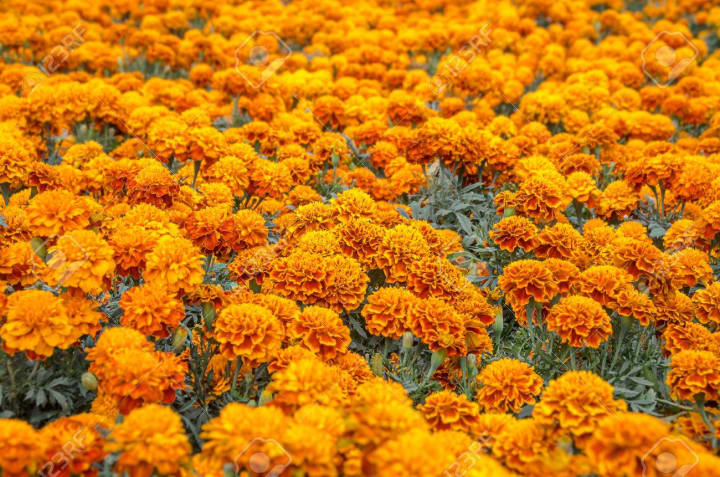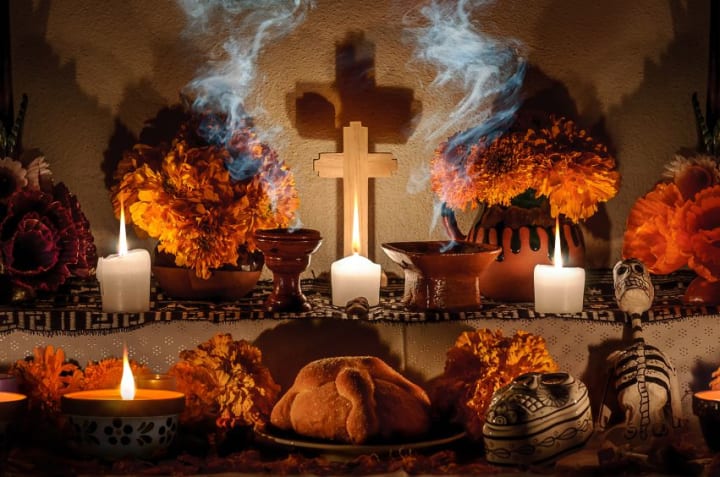The Red Chapulín
Eating well in Atlixco de las Flores

A chapulín lit on the stone wall at the overlook outside the church on Cerro de San Miguel. Down in the valley, there are marketplace stalls that sell those meaty red locusts roasted and seasoned with lime and salt and wrapped in tortillas and to me they taste like tiny land-lobsters.
“My abuelita, or grandmother, would have eaten that raw,” said Ana, my colleague and friend from the linguistics department at the University of Illinois.
Ana and I were in the pueblo mágico, or magic town, of Atlixco de las Flores in central Mexico. It’s Ana’s hometown, and by chance, this year’s linguistics conference was being held in Cholula, Puebla (forty-five minutes away). I had taken Ana up on her offer to come to Mexico together, and stay at her family’s home in the cool shadow of the Popocatépetl volcano. It was a big moment in Ana’s career as she would give a talk on verb conjugation in the Nahuatl or Aztec language which she and her family speak. And for me, an entirely un-exotic professor of Spanish, it would be a chance to do one of the things I love most: eat.
I was unaware that our trip to this enchanted land would be a bridge that transcends dimension.

“This is atole,” Ana said, handing me something that looked like hot chocolate in a brown, clay mug with painted yellow flowers. It tasted like cinnamon. “It’s made from corn.”
“Gracias,” we bid the vendor, and bit into churros (cream-stuffed donut sticks) as we continued strolling the street market.
“Of course, we will need to find all-new cups, plates and bowls for abuelita’s altar,” Ana said. Día de los muertos, Day of the Dead, was only two days away.
“The offerings of food and drink the spirits of your ancestors enjoy…fresh mugs every year?” I asked, wiping my chin of churro filling.
“All-new each year.” Ana inspected chunks of copal resin, deeply fragrant incense that is burned to bring the spirits to our dimension, and sometimes I wondered with whom else we were sharing that late October air.
For lunch we had steamed cow-head tacos at La Revolución, a taquería or taco place where the town meets a field of Mexican marigolds.
“Cempasúchil,” she told me. No doubt a Nahuatl word. “Also known as flor de muerto, flower of the dead.”
Of course, I thought.
“You’ll see them everywhere this week. They go on the ofrendas, altars. And we line the streets with their petals to guide the Dead into our homes.” I gazed out over the rolling sea of unearthly orange and took a bite of my taco. “Oh, and back when they did human sacrifices, the cempasúchil was ground into powder and rubbed onto the faces of the sacrificed. Supposedly it made them not feel death.” I popped a chapulín into my mouth and washed it down with a sip of horchata, sweet cinnamon rice water. A pickup truck rolled past with bundles of the flowers stacked ten-feet high. The cempasúchil helped them not feel death.

Ana gave her talk on Nahuatl verb conjugation and I thought it would be cool to learn Nahuatl. Many of the words are interesting. I found out that word for gold, teocuítatl, means excrement of God. And poetry, xochicuícatl, means flower-songs. Poets are flower-singers. We gathered with Ana’s family that afternoon and ate mole, a rich and spicy sauce that has tons of ingredients (thirty or so) including chocolate. Her mother ladled it over turkey and rolled up corn tortilla enchiladas then sprinkled it with sesame seeds.
“I guess mole is Aztec for…sauce,” I ventured. I was right. "Molli", she said. Nahuatl for sauce.
“Ahuacatl means avocado,” she continued.
“I’m listening.”
“So, ahuacamolli…”
“Avocado sauce.”
“También significa otra cosa,” her cousin Fredy said. It also means something else.
“Ahuacatl, avocado, also means testicle,” Ana said, shaking her head and slapping Fredy on the arm. You would think Ana’s father Don Pedro understood English the way he was laughing. I’ll never think of guacamole the same way.
On the morning of the Day of the Dead, we drove deep into the hills to a place called Santa Cruz de las Mesas. We arrived at an old hacienda where giant blue-green agave plants burst from the soil. Ana, cousin Fredy and I tasted mezcal of all flavors — coffee, tamarind, hibiscus, original — potent alcohol that is sometimes made with a live worm from the maguey cactus or scorpions. The scorpion dies in the bottle, the master mezcal craftsman told us. The scorpion kind is popular with doctors, for their patients, he said. There was cempasúchil out there, and it looked an even deeper orange in the mid-morning sun. And guess what we ate between shots of mezcal? If you guessed spoonfuls of red chapulín powder, you are right.
The ofrenda was all ready now. Sepia-toned photos of Ana’s abuelita and abuelito were front-and-center on the altar. Cempasúchil flowers painted the living room gold. Thick copal smoke hung silver blue. Outside, flor de muerto petals lie in the shape of a cross.
It was after the sun had set over Cerro de San Miguel when the first spirit of the Dead came down the marigold path.

About the Creator
Tony Marsh
I am a writer who focuses on themes of deification, magic, war, and comedy.







Comments
There are no comments for this story
Be the first to respond and start the conversation.